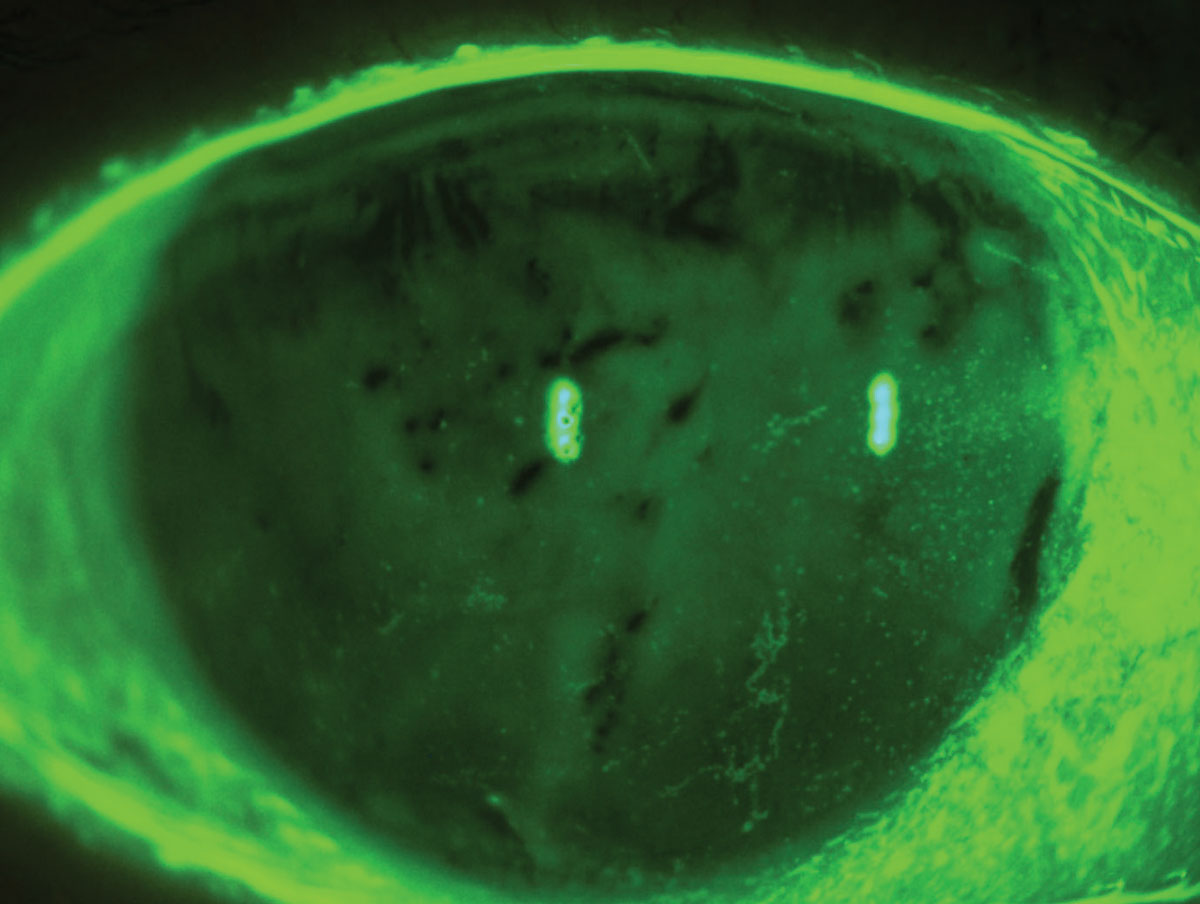 |
Patients with anxiety and depression may be more likely to also develop dry eye. Photo: Luis Rojas, OD. Click image to enlarge. |
Last week during ARVO 2023 in New Orleans, a group of researchers presented findings from their study investigating the connection between dry eye and demographic characteristics, geographic residence and psychiatric comorbidity in adults older than 65. The data revealed an association between dry eye and the following factors: gender, age, race, geography, anxiety and depression. The strongest association was noted in patients with both psychiatric disorders.
For the analysis, researchers identified 21,059 patients with clinically significant dry eye (defined as two or more dry eye claims submitted in one calendar year) from a 5% random sample of 2011 Medicare beneficiaries in the United States. The average patient age was 75. To calculate odds ratios (OR) between dry eye and anxiety and depression, the team used logistic regression models controlled for demographic covariates.
Compared with men, women in the cohort were 2.03-times more likely to have dry eye. Patients of Asian (OR: 1.85) or Native American race (OR: 1.51) were more likely to have a diagnosis of dry eye than their white counterparts, and Black patients were even less likely to have dry eye (OR: 0.83).
Geographic residence and age also both affected odds ratios for dry eye; compared with patients in the Northeast, those residing in the West were more likely to have dry eye (OR: 1.38), while patients in the Northwest were less likely (OR: 0.58). Patients aged 75 and older were also more likely to have dry eye than those aged 65 to 74 (ORs: age 75 to 84, 1.49; age 85+, 1.54).
Regarding the association between depression and anxiety and dry eye, the researchers pointed out in their abstract that “having both depression and anxiety was more highly associated with dry eye (OR: 2.38) compared with having depression (OR: 1.95) or anxiety (OR: 2.22) alone.” In light of this finding, the research team concluded that “longitudinal studies evaluating the temporal relationship between dry eye and psychiatric disease are warranted.”
Original abstract content © Association for Research in Vision and Ophthalmology 2023.
Li G, Vargas CG, Klawe J, et al. Association of dry eye with demographic characteristics, geography, and psychiatric comorbidity in the geriatric population. ARVO 2023 annual meeting. |


